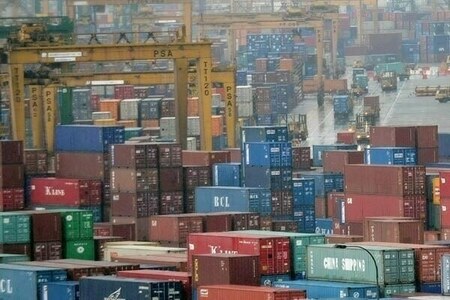Customs Valuation Directorate Revises Tile Import Values
The Directorate General of Customs Valuation Karachi has established updated customs values for a diverse selection of imported tiles, encompassing both ceramic and porcelain varieties.
As per valuation ruling (2011 of 2025) issued by the directorate, adjustments have been implemented regarding the customs values for imports, impacting 14 classifications of polished porcelain tiles, 14 types of standard porcelain tiles, and nine categories of matt/glazed porcelain tiles. These also include glazed polished tiles, borders, motifs, moldings, skirting, and trimming—whether undecorated or embellished with gold, silver, or luster.
The ruling clarifies that the customs values for both ceramic and porcelain tiles were initially ascertained under Section 25-A of the Customs Act of 1969, as detailed in valuation ruling No 1972/2025.
This initial ruling faced challenges and was subsequently reviewed by the director general under Section 25D of the Customs Act, 1969. It was then sent back to the Directorate with instructions to conduct a new assessment under Section 25A of the same Act, taking into account the objections raised during the revision. The original valuation ruling remains in effect until the new assessment is completed.
The revision order specifically addressed the grouping of tiles originating from the UAE, Turkey, and Iran into a single “other” category, which had lower values compared to those from China, as well as the valuation of larger-sized tiles originating from Turkey and the UAE.
Analysis to Determine Customs Values
In accordance with the director general’s directives, the directorate convened several meetings to reassess the customs values. Stakeholders provided documentation to support their positions. The Directorate scheduled meetings on 05.05.2025 and 16.06.2025 with the goal of issuing a valuation ruling that duly considered stakeholder input and supporting documents.
During these discussions, importers argued that international tile prices had fallen because of improvements in technology.
They also underscored the significance of preventing incorrect declarations of porcelain tiles. Meanwhile, local manufacturers emphasized their considerable investments in domestic tile production, which included the production of larger-sized tiles. They contended that imported tile prices in the local market remained elevated and advocated for a market inquiry to substantiate their assertions.
Instead of providing full documentation, stakeholders offered proposed valuation figures for various tile sizes. A central issue in VR 1972/2025 was the categorization of tile origins under a solitary “others” classification. Importers claimed that this method devalues tiles from non-Chinese origins and does not involve adequate stakeholder consultation. They further claimed that tile prices do not increase proportionately with size.
Conversely, manufacturers asserted that prices do scale with size and suggested that valuations for larger tiles should be higher. They also proposed that only the “other origin” valuations require revision, consistent with the Order-in-Revision. The department acknowledged the manufacturers’ participation.
Furthermore, importers and representatives from RAK Ceramics in the UAE were asked to provide sales tax returns along with Annexure-C. However, they did not submit the required documents to support their claims.



Comments (0)
No comments yet. Be the first to comment!
Leave a Comment